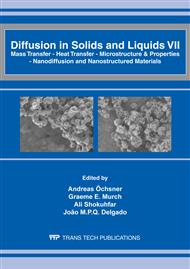p.307
p.313
p.318
p.324
p.330
p.335
p.341
p.348
p.354
Emission Distribution and Regulation of Local Heat Source
Abstract:
Pollutants can be classified according to their chemical composition, harmfulness, hazardousness, risk rate and toxicity. The most monitored pollutants are particulate matter (PM), carbon monoxide (CO), nitrogen oxide (NOx), sulfur dioxide (SO2), organic substances which are in the form of gaseous phase in waste gases expressed as total organic carbon, dibenzodioxins and dibenzofurans [1-3]. Other pollutants are divided into several groups and subgroups, such as substances with carcinogenic effects (asbestos, Co, Cd, Be, Ni, As, Cr, dioxins, etc.), solid inorganic contaminants (He, Se, animony, and others) and inorganic pollutants in the form of gases (HCl, HF, ammonia, etc.), organic gases and vapours (phenol, toluene, acetone and many others) and gases causing the greenhouse effect (CO2, methane, N2O, hydrofluorocarbons, etc.). The term particulate matter, or suspended matter refers to the emissions of a wide range of wind drift solids and liquid particles of material in size from several nanometres up to 0.5 mm, which stay in the air for some time. This is a major component of atmospheric pollution, which contributes to harmful effects not only on human health but also on intensity of materials degradation. Into the atmosphere, where we can meet them, regardless of particle size and chemical composition, in the form of a complex heterogeneous mixture, they are released from burning fossil fuels and also from burning biomass-based fuels, while domestic heating accounts for about 16% of the total production of particulate matter [4,5,6]. This percentage represents a degree of imperfect combustion of fuels used in local heating. Emissions from incomplete combustion are undesirable from the point of view of human health as well as from the economic point of view, because this leads to the degradation of materials. Nevertheless, since fuel combustion is necessary for the society, emissions are still produced. This paper presents an automated method of perfect combustion control in local heating in order to minimize emissions being produced.
Info:
Periodical:
Pages:
330-334
Citation:
Online since:
April 2012
Keywords:
Price:
Сopyright:
© 2012 Trans Tech Publications Ltd. All Rights Reserved
Share:
Citation:


